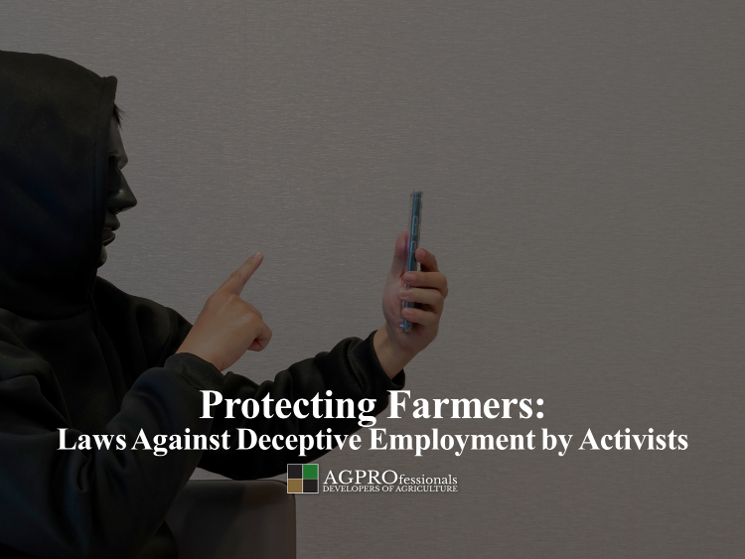
Safeguarding Agriculture – Laws Against Deceptive Activist Employment
Farmers and ranchers dedicate their lives to producing safe, sustainable, and nutritious food for families across the United States. In recent years, however, extremist animal rights activists have increasingly targeted livestock operations by securing jobs under false pretenses. Once inside, these individuals may stage incidents, selectively edit footage, and then distribute videos designed to damage the reputation of hardworking producers.
To counter these deceptive practices, many states have passed legislation that makes it unlawful to obtain employment in agriculture with the intent to cause harm, defame, or discredit farmers. Such measures are vital to protecting private property, maintaining biosecurity, and preserving the credibility of American food production.
States Taking Legislative Action
Across the country, legislatures have recognized the risks of deceptive infiltration and have acted to strengthen protections for agricultural businesses. States including Arkansas, Idaho, Iowa, Kansas, Kentucky, Missouri, North Carolina, Utah, Wyoming, and others have adopted laws aimed at shielding producers from misinformation campaigns.
Ongoing Legal Challenges from Activist Organizations
Despite the practical need for these laws, activist groups have persistently contested them in court.
Organizations such as the Animal Legal Defense Fund (ALDF), People for the Ethical Treatment of Animals (PETA), the American Society for the Prevention of Cruelty to Animals (ASPCA), the Humane Society of the United States (now operating as Humane World for Animals), Center for Food Safety, Farm Sanctuary, Mercy For Animals, Farm Forward, and Western Watersheds Project have repeatedly filed lawsuits to strike down these protections, often arguing they restrict free speech.
A February 2025 analysis by Husch Blackwell, titled “A State-By-State Guide to ‘Ag-Gag’ Legislation” (linked in the Resources section) provides a comprehensive overview of both the laws and the resulting court battles.
Recent Legal Victory in Iowa
One of the most notable rulings occurred in Iowa, where Chief U.S. District Judge Stephanie Rose upheld state legislation preventing trespassers from using cameras or recording devices to investigate livestock operations. The decision affirmed that the law serves a valid purpose in protecting farmers’ rights to property and privacy while leaving room for lawful advocacy. Although activists are considering an appeal, this ruling was a clear victory for agriculture and a reminder that fraudulent tactics have no place in the industry.
Why These Protections Matter
These laws are not intended to shield bad actors—they exist to ensure fairness, transparency, and respect for private property. Groups that enter farms under false pretenses are not pursuing genuine animal welfare oversight; instead, they seek to misrepresent livestock producers to advance an anti-meat agenda.
The laws safeguard:
- Producers’ Rights – Farmers and ranchers deserve protection from fraudulent employment and staged attacks.
- Animal & Food Safety – Unauthorized entry can introduce disease risks that jeopardize livestock health and food security.
- Accurate Public Understanding – Communities should not be misled by manipulated activist campaigns.
Continuing the Fight for Agriculture
Activist organizations remain determined to dismantle these protections through the courts, making it essential for producers, lawmakers, and agricultural advocates like AGPROfessionals to remain vigilant. Defending against deceptive employment practices is about more than agriculture—it’s about upholding honesty, fairness, and the livelihoods of the people who provide food for the nation.
- 2025_A_State by State Guide to Ag Gag Legislation-Husch Blackwell-deceptive employment.pdf
- 9th Circuit strikes down most of Idaho%E2%80%99s %E2%80%98ag gag%E2%80%99 law _ Capital Press-deceptive employment.pdf
- US appeals court revives law banning unauthorized recording on industrial farms _ Reuters-deceptive employment.pdf
